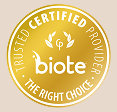The unveiling of information regarding early detection of breast and ovarian cancer is like a guiding light for women in the quest for health and longevity. This comprehensive blog post is tailored for the women who understand that knowledge can be the difference between fear and empowerment, between chance and control.
Significance of Self-Examinations
While regular screenings at a clinic are vital, the power of self-examination cannot be overstated. It is often a woman’s first line of defense, a personal commitment to ensuring her well-being. A self-examination practice carried out monthly not only offers familiarity with her own body but can also lead to the early detection of abnormalities, which when addressed promptly, can save a life.
When it comes to performing breast self-examinations, the three T’s are your allies – touch, look, and feel. Through tactile exploration, visual surveillance, and keen perception of changes, women can detect even the most subtle irregularities.
Here’s a step-by-step guide on how to perform a self-exam at home:
How to Perform a Breast Self-Examination (BSE)
- Stand in front of a mirror with your arms by your side. Observe the size, shape, and color of your breasts. Look for any visible changes such as puckering, dimpling, or changes in contour.
- Raise your arms and observe your breasts in the same manner.
- Lie down and place a pillow under your right shoulder to perform the examination on your right breast. Use the pads of your fingers to explore the entire breast in a circular motion, moving from the outside to the center, and gently squeezing the nipple to check for discharge. Repeat this process for the left breast.
By incorporating self-examinations into your monthly health routine, you are taking proactive steps toward well-being.
Importance of Professional Screenings
While self-examinations are powerful, they should complement, not replace, the expertise of medical professionals and the diagnostic accuracy of professional screenings. The medical field has evolved to offer screening tools specifically designed to detect cancer at its earliest, most treatable stages.
Women should be aware of the various screening methods available for breast and ovarian cancer, and the crucial role they play in early detection.
Mammograms for Breast Cancer
Mammograms, X-ray images of the breast, are recommended for all women starting at age 40. For women with a family history or known genetic predisposition to breast cancer, the screening may begin at a younger age and be more frequent. Early detection through mammograms has been key to survival rates, as it can identify tumors long before they can be felt.
Understanding Ovarian Cancer Screenings
Ovarian cancer is notoriously difficult to detect early due to the lack of symptoms in the initial stages. However, screenings such as transvaginal ultrasound (TVS) and the CA-125 blood test, when used in high-risk populations, can sometimes detect the presence of ovarian cancer before it has spread.
The message is clear; be vigilant and stay informed about the recommended screenings for your age and risk factors. Regular consultations with your healthcare provider can help tailor a screening plan that is personalized to your needs.
Annual Check-ups with Gynecologists
An annual visit to your gynecologist is not just about a routine check-up. It’s about establishing a relationship with a healthcare provider who understands the nuances of female health, someone who can guide, inform and support you throughout your journey.
During these check-ups, gynecologists will perform pelvic exams to check for any abnormalities in the reproductive organs. They may also conduct Pap tests to screen for cervical cancer. These routine visits are an opportunity to discuss any concerns or changes in your health, and ensure that you are up-to-date with recommended screenings.
Taking Control of Your Health
Early detection empowers women to take control of their health and make informed decisions. It also increases the chances of successful treatment, making regular screenings and self-examinations a crucial part of every woman’s health routine.
In addition to these measures, maintaining a healthy lifestyle with a balanced diet, regular exercise, and avoiding harmful habits like smoking can also contribute to overall well-being and reduce the risk of cancer.
Remember, knowledge is power. Stay informed, stay proactive, and prioritize your health. Your body will thank you for it. So, do not wait any longer, make a commitment to yourself today and take the necessary steps towards a healthier tomorrow. Together, we can fight against breast and ovarian cancer by promoting awareness and early detection.
Take the first step towards prioritizing your health and schedule your yearly visit at the Center for Women’s Health and Breast Care (CWHBC) in Beaumont, Texas. Our team of expert gynecologists will provide personalized care and help you stay on top of recommended screenings. Don’t wait any longer – book your appointment today and take control of your health!


